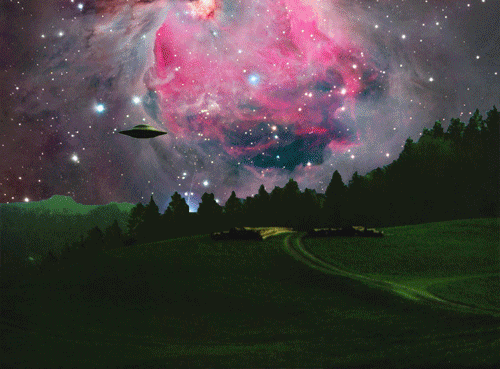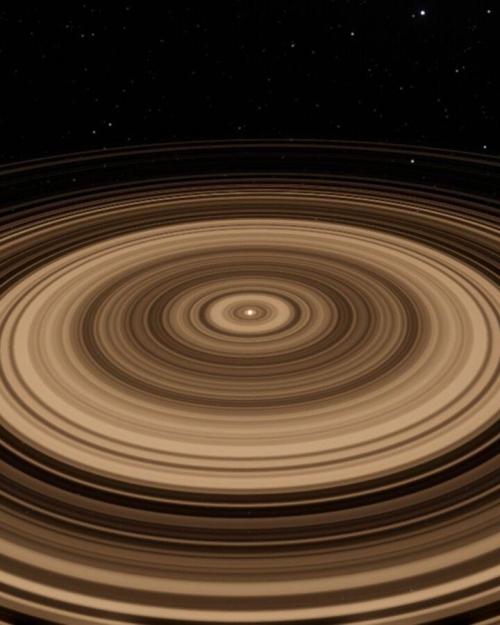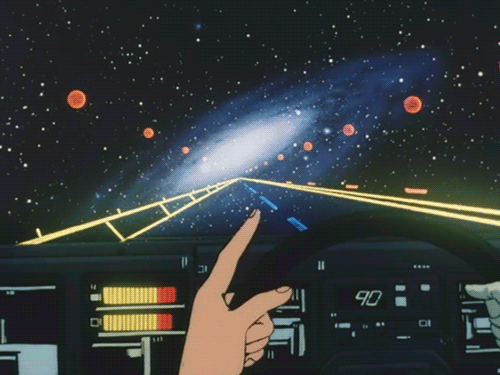UY Scuti – The Largest Star Discovered So Far

UY Scuti – The Largest Star Discovered So Far
There are approximately 1 trillion trillion stars in our Universe, a number approximated by European Space Agency (ESA). Stars in the Universe come in all sizes. Their radius can be as small as 20 km and as big as 1 billion Km. One such extreme star is UY Scuti, a red supergiant star and the beast inside of which 5 billion Suns can fit.
UY Scuti is a red supergiant star in the constellation of Scutum and is known as the largest star in the universe. Approximately 9,500 light-years away, where 1 light-year is 6 trillion miles. In the summer of 2012, astronomers from the Very Large Telescope in the Atacama Desert in Chile measured the parameters of three red supergiants near the Galactic Center region: UY Scuti, AH Scorpii, and KW Sagittarii. They determined that all three stars are over 1,000 times bigger than the Sun and over 100,000 times more luminous than Sun. The stars’ sizes were calculated using the Rosseland Radius, the location at which the optical depth is 2/3, with distances adopted from earlier publications.
UY Scuti was found to be the largest and the most luminous of the three stars measured, at 1,708 ± 192 R0 which is larger than the orbit of Jupiter. The size of UY Scuti can be realized from the fact that even if we build a hypothetical object that travels at speed of light, it will take 7 hours to travel around it, whereas for Sun it will just take 14.5 seconds. As many as 5 billion Suns can fit inside of this beast.
UY Scuti is 340,000 times more luminous than the Sun. This means that the total energy output of this beast is 340,000 times greater than our star. However, the surface temperature of UY Scuti is about 3,300 K, roughly half the value for Sun. The surface temperature can be estimated by using Wein’s law in Physics which states that the wavelength of light emitted from a black body is inversely proportional to the 4th power of its absolute temperature. Hence, red-colored stars are cooler.
Although the star is very luminous, it isn’t visible with the naked eye as it is a ninth magnitude star. We can only see stars up to the sixth magnitude with the naked eye.
A star spends its 90% life on the main sequence of the Hertzsprung Russell diagram. On the main sequence it converts hydrogen into helium in its core. The Sun has been on the main sequence for the past 5 billion years and will remain there for another 5 billion years. On the main sequence, the inward gravitational collapse of the star is balanced by the outward gas and radiation pressure from the core nuclear reaction – a situation termed as hydrostatic equilibrium.
Stellar evolution models tell that UY Scuti has already left the main sequence and has started the fusion of helium in its core. This means it is left with just 10% of its life. Stars like these have a short lifespan of a few million years as compared to trillions of years for red dwarfs. After helium, heavier elements like carbon, neon, oxygen, magnesium, sulfur, silicon, iron and nickel will be created. Nickel-56 would be the last MAJOR fusion product in its core.
The next reaction – Nickel 56 to Zinc -60 isn’t thermodynamically favourable as it is an edothermic reaction (as the binding energy per nucleon vs mass number curve peaks at Iron-56. After this, no fusion reaction will be possible. This will give gravitational collapse an upper hand and a catastrophic collapse will ensue forming a stellar-mass black hole.
Article by Rishabh Nakra, www.secretsofuniverse.in
(unable to copy link)
More Posts from Space0 and Others

By Waneella ♥

![Milky Way Over Durdle Door [OC] [5661x3764]](https://64.media.tumblr.com/b14c069c575f350b650df94b9dd3d6ee/a2b9f5c6ee095b07-16/s500x750/9b2dbe3e41ec2984d8b5b235f7a48c5577151235.jpg)
Milky Way over Durdle Door [OC] [5661x3764]











Solar System
This animation shows the orbits and movements of the objects in the HR 6819 triple system. Which includes an inner binary with one star , a newly discovered black hole . As we move away we see the outer object in the system, another star in a much wider orbit

This is J1407b. The planet with the largest ring system.

Beyond stunning


-
 saltythexfilesindianjonescop liked this · 2 years ago
saltythexfilesindianjonescop liked this · 2 years ago -
 rebisintesis liked this · 4 years ago
rebisintesis liked this · 4 years ago -
 thomasbrisenio reblogged this · 4 years ago
thomasbrisenio reblogged this · 4 years ago -
 3nlight3n3d-b0y liked this · 4 years ago
3nlight3n3d-b0y liked this · 4 years ago -
 rh35211 reblogged this · 5 years ago
rh35211 reblogged this · 5 years ago -
 sammnotviole reblogged this · 5 years ago
sammnotviole reblogged this · 5 years ago -
 sammnotviole liked this · 5 years ago
sammnotviole liked this · 5 years ago -
 metalraider liked this · 5 years ago
metalraider liked this · 5 years ago -
 freelightpandahumanoid liked this · 5 years ago
freelightpandahumanoid liked this · 5 years ago -
 voltos9 reblogged this · 5 years ago
voltos9 reblogged this · 5 years ago -
 space0 reblogged this · 5 years ago
space0 reblogged this · 5 years ago -
 optimaprime1 liked this · 5 years ago
optimaprime1 liked this · 5 years ago -
 pestcontrolny liked this · 5 years ago
pestcontrolny liked this · 5 years ago -
 galaxiescatsluxur liked this · 5 years ago
galaxiescatsluxur liked this · 5 years ago -
 mehdi-r liked this · 5 years ago
mehdi-r liked this · 5 years ago -
 skelemonjack liked this · 5 years ago
skelemonjack liked this · 5 years ago -
 doc-cjv8 liked this · 5 years ago
doc-cjv8 liked this · 5 years ago -
 robanybody liked this · 5 years ago
robanybody liked this · 5 years ago -
 zoo5555555 liked this · 5 years ago
zoo5555555 liked this · 5 years ago -
 ashdudesworld reblogged this · 5 years ago
ashdudesworld reblogged this · 5 years ago -
 ashdudesworld liked this · 5 years ago
ashdudesworld liked this · 5 years ago -
 lojascolumbia liked this · 5 years ago
lojascolumbia liked this · 5 years ago -
 dathibou liked this · 5 years ago
dathibou liked this · 5 years ago -
 dpb1953-lion liked this · 5 years ago
dpb1953-lion liked this · 5 years ago -
 boyvt liked this · 5 years ago
boyvt liked this · 5 years ago -
 deanlestrade liked this · 5 years ago
deanlestrade liked this · 5 years ago -
 millevoltetua-blog liked this · 5 years ago
millevoltetua-blog liked this · 5 years ago -
 john-carter-was-here reblogged this · 5 years ago
john-carter-was-here reblogged this · 5 years ago -
 entredormidaydespierta liked this · 5 years ago
entredormidaydespierta liked this · 5 years ago -
 givn reblogged this · 5 years ago
givn reblogged this · 5 years ago -
 givn liked this · 5 years ago
givn liked this · 5 years ago -
 slobpie liked this · 5 years ago
slobpie liked this · 5 years ago -
 matheusinn166 liked this · 5 years ago
matheusinn166 liked this · 5 years ago -
 critteronimo reblogged this · 5 years ago
critteronimo reblogged this · 5 years ago -
 critteronimo liked this · 5 years ago
critteronimo liked this · 5 years ago -
 unicornkettle liked this · 5 years ago
unicornkettle liked this · 5 years ago -
 abidanblog liked this · 5 years ago
abidanblog liked this · 5 years ago -
 standard-block reblogged this · 5 years ago
standard-block reblogged this · 5 years ago
